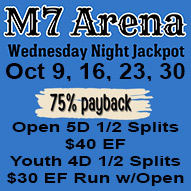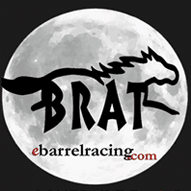Many myths, rumors and misinformation are circulating about premises and animal identification. In Texas, 14,341 premises were registered, as of May 25. Below is text from a new brochure to help with some of the misinformation. Carla Everett, TAHC.
For more info, brochures, or to schedule an ID presentation, call the Texas Animal Health Commission (TAHC) 800550-8242 or just email me!
TAHC web site:
http://www.tahc.state.tx.us
USDA’s ID web site:
http://animalid.aphis.usda.gov/nais/index.shtml
In a Nutshell: NAIS
The National Animal Identification System (NAIS) is designed to provide the capacity to rapidly identify all animals and premises (sites) that have had direct contact with a disease. NAIS consists of three components:
1. Premises (or site) identification
2. Animal identification
3. Animal tracking.
The U.S. Department of Agriculture (USDA) has set benchmark for completing each component of the program. By January 2007, 25 percent of the country’s premises are to be registered. By January 2008—70 percent of the premises are to be signed up, and by January 2009, the three components are to be fully functioning.
Premises Identification
The program is national, but each state is responsible for implementing premises identification. Premises are locations where livestock or fowl are handled, managed, housed, or processed.
The Texas Animal Health Commission (TAHC), as of May 2006, has implemented premises identification on a voluntary basis. Proposed regulations for mandatory identification were tabled until at least 2007.
Identifying a premises involves obtaining a seven-character alpha-numeric”identifier” for the farm, ranch, veterinary clinic or other site where livestock or fowl are handled, housed, managed or processed. Signing up can be accomplished on the TAHC web site or by mail.
Information requested includes the contact person’s name, phone number, the premises’ physical address, and a list of species raised on the site. Acreage or herd or flock size is not requested.
Animal Identification
This component of the NAIS will “come on line†gradually, and will involve identifying livestock and fowl that are moved from their premises of origin (place of birth). Depending on the species of animal, the identification may be accomplished with a tag, band, microchip, radio frequency identification device (RFID tag) or other form of identification.
Animal Tracking
Animal tracking databases, approved by the USDA and operated by companies, associations or other entities, will hold livestock and fowl movement information. This data will be accessed by animal health regulatory agencies for disease control purposes.
Dispelling Rumors, Myths & Misinformation
I’ve got only one animal, so why do I need to have my premises identified?
Your one animal may be as susceptible to disease as the herd or flock with hundreds. In the event of disease, state and federal animal health veterinarians and inspectors must ensure that all disease is stamped out. Going door-to-door to locate susceptible animals that must be tested or vaccinated is inefficient and costly!
Wouldn’t you want to know if a disease incident occurs in your area, so you can take proper precautions? Identifying all premises enables an efficient and effective response to disease.
I read that dogs and cats are included.
No. The NAIS involves livestock, fowl and poultry. Some of the species included are cattle, horses, swine, sheep, goats, exotic hoof stock, chickens, turkeys.
All chickens will be microchipped!
NAIS does not include plans for microchipping chickens. When animal identification goes into effect, an identifying wing band or leg band would suffice for movement of birds, or for commingling birds from different flocks.
Someone said I have to register my premises, because I have a parakeet.
No. Persons who owns birds kept as house pets do not need to register their premises, if they do not propagate birds for sale or trade. In a bird disease situation, these birds may be tested and may come under the same movement restrictions as other fowl.
Owners of aviaries and bird breeders or sellers should register their premises.
I have to identify my pet animals…or my animals used for MY food!
No. If your animals are raised for your own use, and they don’t leave the premises (site) you won’t need to identify them.
When animal identification goes into effect, only the animals that leave their premises of origin will be identified. If you haul your calf, pig or other animals to the local slaughter plant for custom processing for your consumption, the animal may not need to be identified.
Reports say you’re going to charge $1,000 a day for not participating!
Premises identification is voluntary now.
The TAHC is a regulatory agency and has administrative penalty provisions in its law as a recourse for persons who refuse to comply with livestock and poultry health regulations. The administrative penalties apply to all TAHC regulations and are imposed by an administrative law judge only after an individual has been issued a warning, provided opportunity for compliance, and allowed a hearing.
This ID program was made just to benefit the “big producer!”
The average cattle herd size in Texas is less than 35! There are many, many producers in Texas who have only a few animals. This program includes all producers.
I don’t sell overseas; why should I care about animal ID?
In today’s global economy, product from the animal you sell at the local livestock market could end up on the dinner table in one of many countries.
Although the program will aid in marketing U.S. products, its greatest advantage will be to make disease response here at home, faster, more effective and more efficient.
I’ll have to call the “government” each time I ride my horse, haul my sheep, or take my pigs to a show. That’s not necessary! However, please call if you have questions, would like disease information, or need entry regulations for shows or travel.
Animal tracking information will be recorded in private databases. When implemented, movements can be reported by computer, or by paper document.
National species-specific working groups are determining which movements need to be reported, how specific species should be identified, and how to make the program work for the producer.
These groups are comprised of association representatives, owners of large and small flocks or herds, and state and federal members. The Equine Species Working Group, for instance, is wrestling with reporting issues.
Horses aren’t food animals. They don’t need to be included.
The NAIS isn’t a food safety program. It is a tool to address animal disease. Horses are susceptible to a number of diseases. Also, during a disease outbreak, horses may be “caught up†in movement restrictions or requirements, even if they are not susceptible to the disease, because viruses and bacteria can be carried on hooves and hides of animals, on vehicles, clothing and equipment.
When animal movement tracking goes into effect, will I report every ride?
The Equine Species Working Group, in a recent document states: “Not every single movement of a horse will have to be reported. Movements such as local trail rides, shows or roping wouldn’t be required reportable events. It is likely that movements would be reportable when horses are transported interstate or to a premises where a brand inspection, certificate of veterinary inspection, or other health papers are required.”
I already have a scrapie number.
The scrapie number, used for sheep and some goats, is not automatically “rolled over†to a premises registration number. Eventually, the premises identification will replace the scrapie number.
How about 4H and FFA kids?
Youths who house their animals at home can use their parents premises identification.
If the parents don’t have animals and don’t need a premises identification, the student may be able to use the identification issued to the 4H Club or FFA Chapter.





